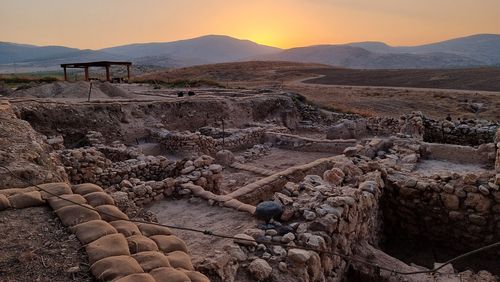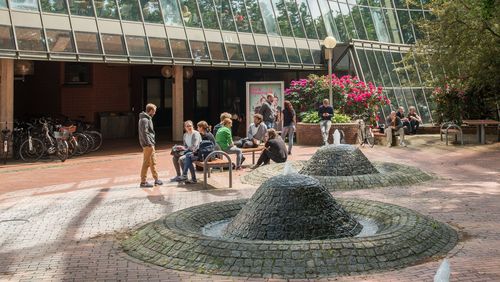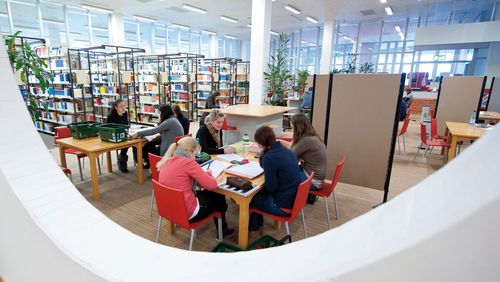A group of students at Oldenburg University and Hochschule Emden/Leer has a vision: to help design a brand new mode of eco-friendly transport. Their goal is to win the international Hyperloop Pod Competition.
Initially Alejandro Delgadillo was just looking for a project for the summer holidays. But when he heard in 2015 about the Hyperloop Pod Competition, an international design competition open to students from all over the world and sponsored by the Californian space transport company SpaceX, he was immediately filled with enthusiasm. "This is a very exciting project about a new mode of transportation," says Delgadillo, a student with the University's bilingual degree programme Engineering Physics. Together with a group of fellow students he set about putting together a team to take on the competition's challenge: developing a transport pod for the Hyperloop system.
"Hyperloop is basically a train in a tube," explains Lukas Eschment, another member of the team. Using magnetic levitation technology, passengers are transported in capsules known as pods through tubes with minimum air resistance at speeds of up to 1,200 kilometres per hour. The idea is that solar cells attached to the tubes will supply the necessary energy. In this way the system would offer an eco-friendly alternative to short-haul flights.
Professor Walter Neu of the Hochschule Emden/Leer regards the concept, which was introduced by SpaceX founder and Tesla CEO Elon Musk, as feasible: "Nothing about it is so far-fetched that it can't be built," he says. Professor Neu is supervising the students' work together with his colleague, Professor Thomas Schüning. "We are delighted to have such a strongly committed team," he notes. Last year, with a team of eight students, the group completed the first competition and became one of the 116 teams that were allowed to present their pod concept at an exhibition in Texas. A significant achievement – even if the group didn't make it into the final round.
Now the team is getting a second chance: in a new competition SpaceX wants teams to build a pod that is above all one thing: fast. Twenty-two students from eleven different nations are working flat out in small groups to develop an improved concept for their pod. Once a week they meet to discuss their results. If the judges like their ideas, they will be allowed to build a prototype and try it out on the test track that runs between San Francisco and Los Angeles this summer.
The key component of the project is magnetic levitation technology. Here, however, it works differently to how it works in the Transrapid trains, which are already in use. Whereas the latter need direct current to generate a magnetic field, the students want their prototype to run without electricity – once the train accelerates. To this end they plan to attach strong permanent magnets to their vehicle. When the train glides down the aluminium tracks of the tube system at high speed, it generates an eddy current. These induced currents flow in closed loops and create a local magnetic field which in turn causes a repulsive effect between the train and the track. "This is applied electrodynamics – you can make the whole train levitate and travel extremely fast without any frictional resistance using this method," Neu explains. The students have already successfully performed an experiment to test this effect with a model they designed themselves.
But there are other factors the future physicists and engineers must take into account: How do they get the train to accelerate? How do they slow it down? How heavy can it be? Then there are tasks they are not used to performing, such as contacting manufacturers to obtain components and software. They also have to plan their work themselves and take care of the finances. And if they make it to the final round of the competition they estimate that they will need around 400,000 euros to build the pod. So they also need to find sponsors – and have already enlisted the support of a software company.
The Hyperloop team really does feel like a small company, says Eschment. "What the students are doing here goes far beyond course content," Professor Schüning adds. Professor Neu explains that in addition to competence in the field, project management and team communication also pose a challenge. But even though the international composition of the team – with members from Nicaragua to Nepal and from Spain to Austria and Germany – occasionally leads to language problems, the end results are always good, says Penelope Bise, a student from France. "We all have the same passion," she adds.
Professor Schüning and Professor Neu support the team as much as they can, for instance by organising workshop facilities for it or procuring important components. "We try to keep the students on the right track," says Schüning. He explains that the students often delve deeper into the subject than their professors but that the latter's job is to ask the right questions, just as the judges in the competition will do. The team is due to present its concept soon. Then it will find out whether all the effort has paid off and it can make the trip to California. The students are clear about their goal: "We don't just want to compete, we want to win," says Delgadillo. On the way to that goal they are also looking for new peers such as computer scientists who have the know-how to help them achieve this.






